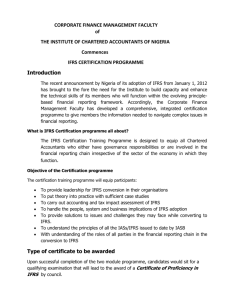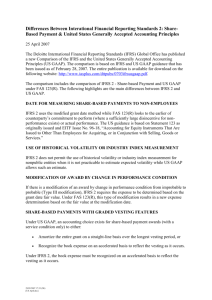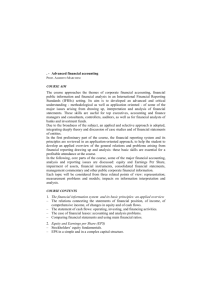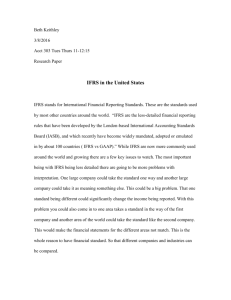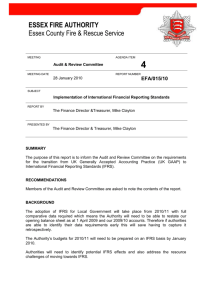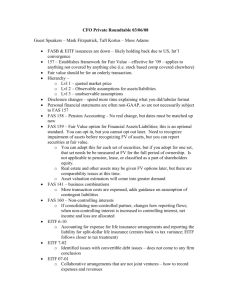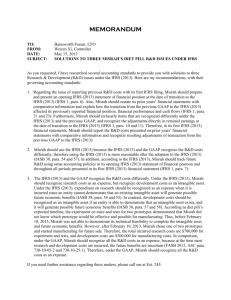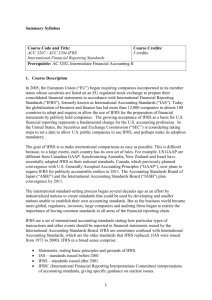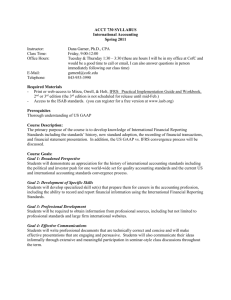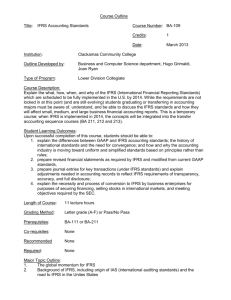adoption of international financial reporting standards
advertisement
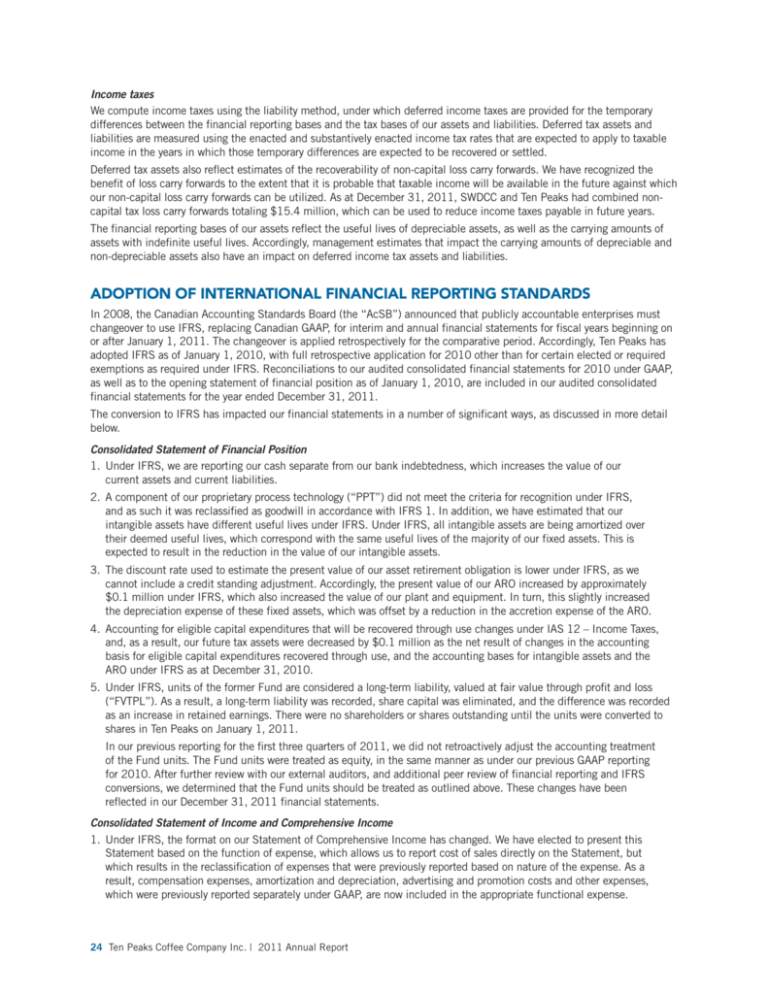
Income taxes We compute income taxes using the liability method, under which deferred income taxes are provided for the temporary differences between the financial reporting bases and the tax bases of our assets and liabilities. Deferred tax assets and liabilities are measured using the enacted and substantively enacted income tax rates that are expected to apply to taxable income in the years in which those temporary differences are expected to be recovered or settled. Deferred tax assets also reflect estimates of the recoverability of non-capital loss carry forwards. We have recognized the benefit of loss carry forwards to the extent that it is probable that taxable income will be available in the future against which our non-capital loss carry forwards can be utilized. As at December 31, 2011, SWDCC and Ten Peaks had combined noncapital tax loss carry forwards totaling $15.4 million, which can be used to reduce income taxes payable in future years. The financial reporting bases of our assets reflect the useful lives of depreciable assets, as well as the carrying amounts of assets with indefinite useful lives. Accordingly, management estimates that impact the carrying amounts of depreciable and non-depreciable assets also have an impact on deferred income tax assets and liabilities. ADOPTION OF INTERNATIONAL FINANCIAL REPORTING STANDARDS In 2008, the Canadian Accounting Standards Board (the “AcSB”) announced that publicly accountable enterprises must changeover to use IFRS, replacing Canadian GAAP, for interim and annual financial statements for fiscal years beginning on or after January 1, 2011. The changeover is applied retrospectively for the comparative period. Accordingly, Ten Peaks has adopted IFRS as of January 1, 2010, with full retrospective application for 2010 other than for certain elected or required exemptions as required under IFRS. Reconciliations to our audited consolidated financial statements for 2010 under GAAP, as well as to the opening statement of financial position as of January 1, 2010, are included in our audited consolidated financial statements for the year ended December 31, 2011. The conversion to IFRS has impacted our financial statements in a number of significant ways, as discussed in more detail below. Consolidated Statement of Financial Position 1. Under IFRS, we are reporting our cash separate from our bank indebtedness, which increases the value of our current assets and current liabilities. 2. A component of our proprietary process technology (“PPT”) did not meet the criteria for recognition under IFRS, and as such it was reclassified as goodwill in accordance with IFRS 1. In addition, we have estimated that our intangible assets have different useful lives under IFRS. Under IFRS, all intangible assets are being amortized over their deemed useful lives, which correspond with the same useful lives of the majority of our fixed assets. This is expected to result in the reduction in the value of our intangible assets. 3. The discount rate used to estimate the present value of our asset retirement obligation is lower under IFRS, as we cannot include a credit standing adjustment. Accordingly, the present value of our ARO increased by approximately $0.1 million under IFRS, which also increased the value of our plant and equipment. In turn, this slightly increased the depreciation expense of these fixed assets, which was offset by a reduction in the accretion expense of the ARO. 4. Accounting for eligible capital expenditures that will be recovered through use changes under IAS 12 – Income Taxes, and, as a result, our future tax assets were decreased by $0.1 million as the net result of changes in the accounting basis for eligible capital expenditures recovered through use, and the accounting bases for intangible assets and the ARO under IFRS as at December 31, 2010. 5. Under IFRS, units of the former Fund are considered a long-term liability, valued at fair value through profit and loss (“FVTPL”). As a result, a long-term liability was recorded, share capital was eliminated, and the difference was recorded as an increase in retained earnings. There were no shareholders or shares outstanding until the units were converted to shares in Ten Peaks on January 1, 2011. In our previous reporting for the first three quarters of 2011, we did not retroactively adjust the accounting treatment of the Fund units. The Fund units were treated as equity, in the same manner as under our previous GAAP reporting for 2010. After further review with our external auditors, and additional peer review of financial reporting and IFRS conversions, we determined that the Fund units should be treated as outlined above. These changes have been reflected in our December 31, 2011 financial statements. Consolidated Statement of Income and Comprehensive Income 1. Under IFRS, the format on our Statement of Comprehensive Income has changed. We have elected to present this Statement based on the function of expense, which allows us to report cost of sales directly on the Statement, but which results in the reclassification of expenses that were previously reported based on nature of the expense. As a result, compensation expenses, amortization and depreciation, advertising and promotion costs and other expenses, which were previously reported separately under GAAP, are now included in the appropriate functional expense. 24 Ten Peaks Coffee Company Inc. | 2011 Annual Report
